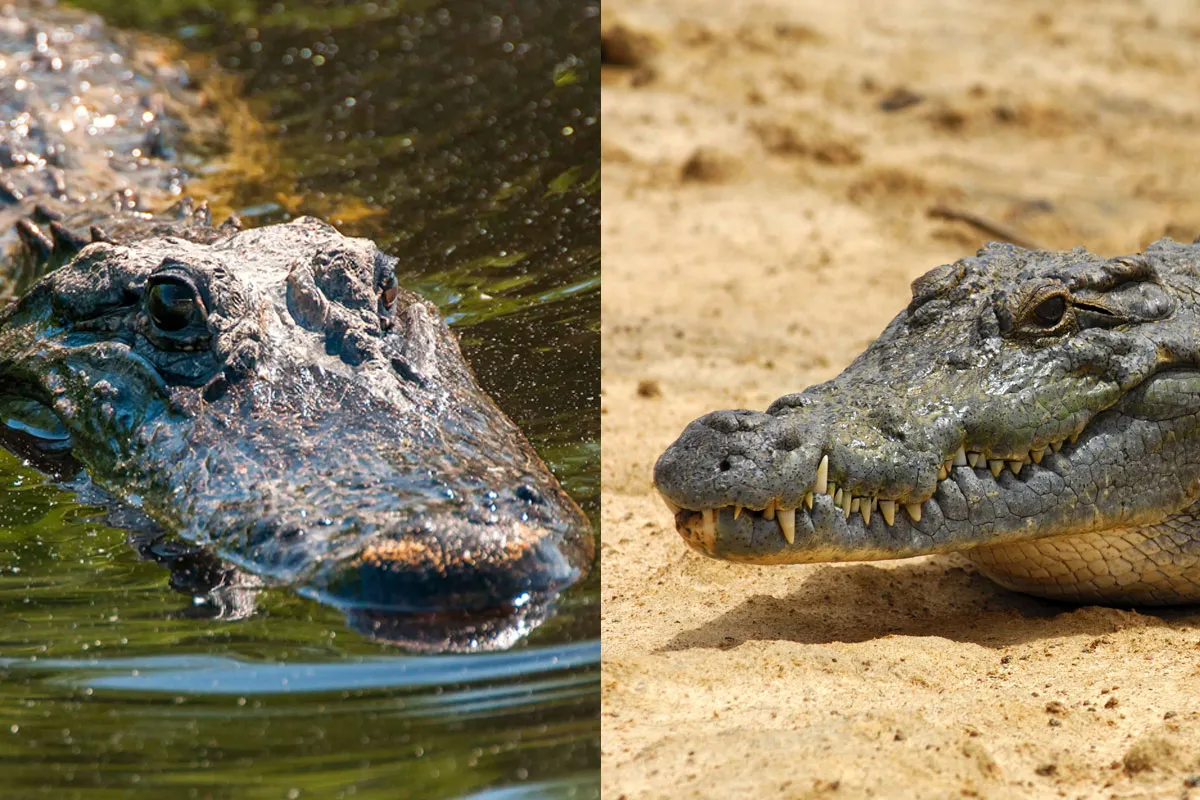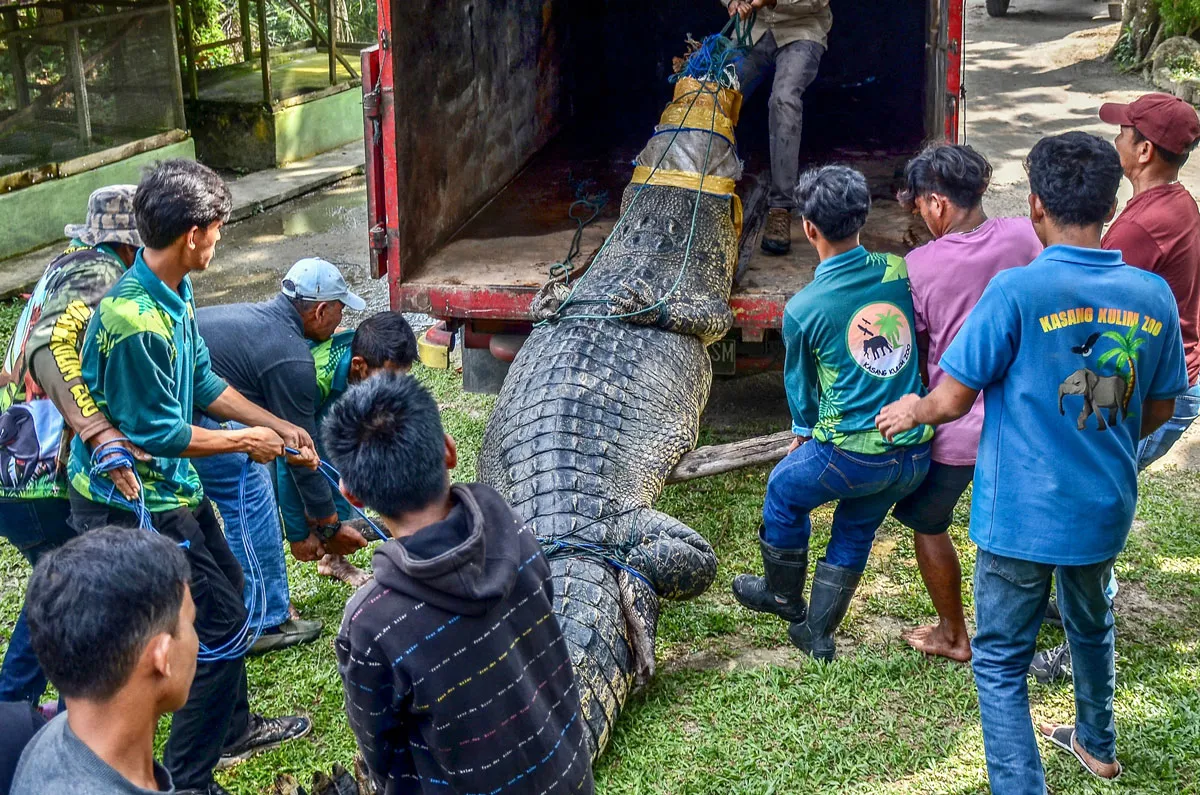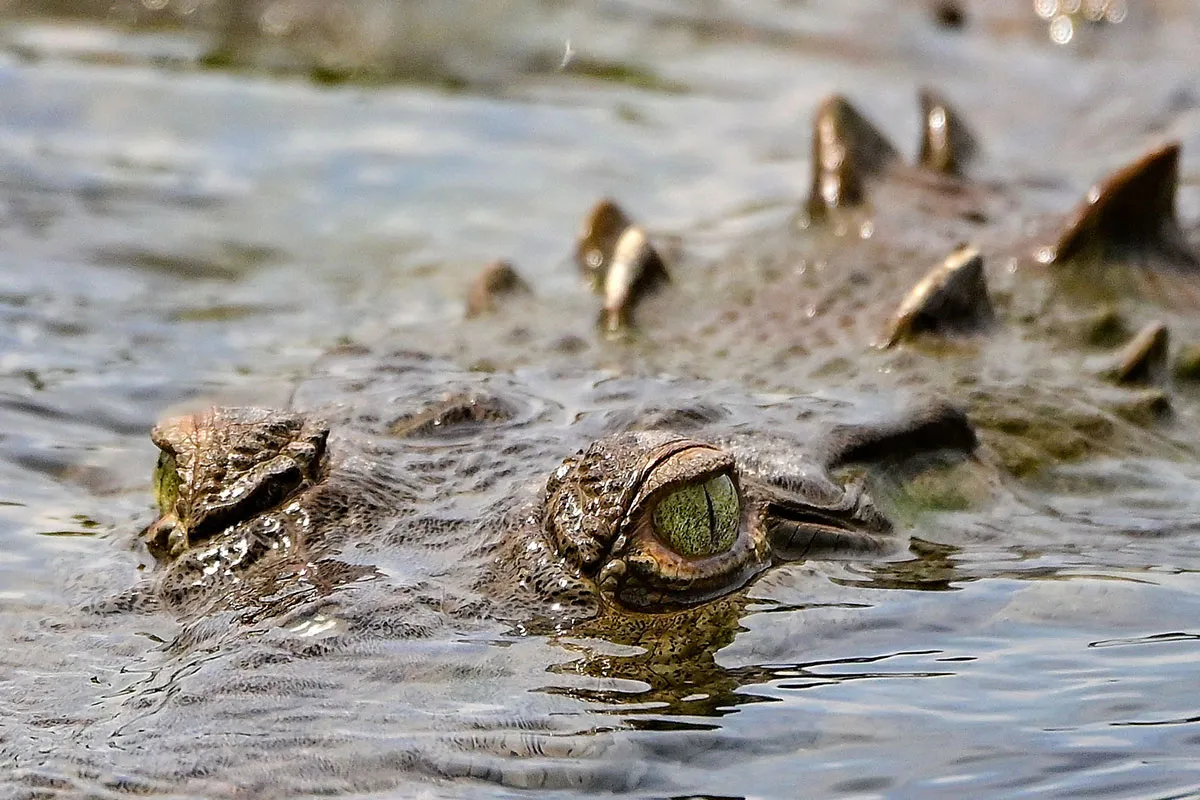To the untrained eye, alligators and crocodiles may seem indistinguishable. After all, the ancient reptiles are a member of the same family of animals (called Crocodilia) and share many physical traits.
But there are some key ways you can tell them apart. Below, we’ve rounded up the five key differences between the ancient animals in terms of their appearance, size, habitat, diet, and hunting habits.
Given how the alligator and crocodile both have one of the most powerful bites on the planet, you don’t want to tangle with either dangerous animal, whether you know what makes them different or not.
How different do they look?
To tell an alligator apart from a crocodile, you need to be on the lookout for a few telltale signs. Primarily, this comes down to colourisation, differences in snout shape, jaw type, and more.
Skin colour
An alligator typically has dark black, green, or grey skin – much darker in appearance than that of a crocodile, which typically will be green or brown. A crocodile’s skin will appear more mottled, too.
Snout
The alligator usually has a U-shaped snout whereas a crocodile will typically have a V-shaped snout.

It’s worth noting that the mugger croc has a rounded U-shaped snout similar to that of an alligator’s, however.
Jaw
There are notable differences between the jaws of alligators and crocodiles. An alligator will have an overbite, with its upper jaw jutting out and concealing the bottom row of teeth.
A crocodile’s jaw, meanwhile, is more perfectly aligned, with both top and bottom jawlines roughly the same size as one another, which allows its teeth to interdigitate.
A croc carries integumentary sense organs (which the detection of pressure changes in the water) all over its body compared to just on the head and around the jaw of the alligator. You can spot these organs on an alligator as black specks around its jaw.
Teeth
With 80 teeth, alligators have more chompers than their crocodile counterparts, who have just 66. For comparison, most adult humans only have 32 gnashers.
Feet & Legs
Other key visual differences between the reptiles include the webbed feet of the gator and the jagged fringed feet of the croc.
Alligators have shorter legs than those of crocodiles, too, thanks to smaller humerus and femur bones.
How big are alligators and crocodiles?
Alligators are typically smaller than crocodiles. The largest of the alligator species – the American alligator – can grow up to 4.5 metres in length. The saltwater crocodile, in comparison, can grow up to a staggering seven metres in length. For context, the tallest person in the world ever recorded was only 2.72m in length.
In terms of individual alligator and crocodile species, the size differences in males can be found below:
Alligator sizes
- American alligator: Can grow up to 4.5m and weigh up to 450kg
- Chinese alligator: Can grow up to 2m and weigh up to 45kg
Crocodile sizes
- Saltwater crocodile: Can grow up to 7m and weigh up to 1,000kg
- Nile crocodile: Can grow up to 6m and weigh up to 748kg
Females of all species of alligators and crocodiles tend to be smaller than their male counterparts.

Where do alligators and crocodiles live?
Alligators are found primarily in North America and China and you’ll find crocodiles in Central America, Africa, Asia, and Oceania.
You’ll find the American alligator in the south-east of the USA. In southern Florida, you may encounter both the American crocodile and the American alligator. The Chinese alligator is found in eastern China.
The dangerous Nile crocodile is found throughout sub-Saharan Africa, the Nile Basin, and Madagascar and the saltwater crocodile can be spotted in eastern India, Southeast Asia, and northern Australia.
Crocodiles tend to live in marshes, wetlands, and rivers. Powerful salt glands on a croc’s tongue allow it to happily live in saltwater environments – although the Nile crocodile does prefer freshwater.
Alligators, meanwhile, live in freshwater environments, typically closer to the shore than their crocodile cousins. The Chinese alligator, for example, lives exclusively in the lower regions of the Yangtze river.
The alligator can survive in temperatures as low as 26°C, whereas crocs need a higher temperature to survive.
What do alligators and crocodiles eat?
While fish make up the majority of the diets of most crocodiles and alligators, both creatures are known to eat other animals.
The American alligator is known to feast on anything that crosses its path. This includes turtles, snakes, and any number of small mammals unfortunate enough to find themselves in the same habitat. And yes, that includes humans – an estimated 26 people have died after a gator attack since 1948.
Chinese alligators are smaller than their American counterparts and chow down primarily on snails, crustaceans, insects, and fish, according to the Smithsonian’s National Zoo & Conservation Biology Institute. They too will eat rodents and other small mammals if given the chance.
The diet of a Nile crocodile consists of fish and just about anything else. These large beasts have been known to kill and consume zebras, porcupines, birds, and even other crocodiles. An estimated 1,000 humans are killed each year by croc attacks.
Finally, the saltwater crocodile eats anything and everything including water buffalo, sharks, and humans.
How do alligators and crocodiles hunt?
The classic image of a crocodile or alligator hunting is of a sickeningly still pair of eyes and snout waiting just above the water’s surface.
In the water, they use their integumentary sense organs to sense pressure and vibration around them. They can wait motionless while scanning the horizon for prey.

Once a croc or alligator has spotted its prey, they will swiftly and aggressively move in for the kill.
Underwater, they kill and eat small prey almost immediately. Attacking animals (or humans) on dry land, an alligator or crocodile can spring out of the water in a quick burst to drag its prey underwater and drown them.
Crocodiles can run in short 1-2 second bursts at around 35km/h. Alligators, meanwhile, are usually a little faster due to their smaller size and weight, reaching running speeds of up to 48km/h. Again, these speeds are only over short distances
The death roll of the reptiles is famous, too. A croc or gator will grip onto its prey and roll over them to cause maximum damage and, ultimately, death to larger prey.
Read more:
